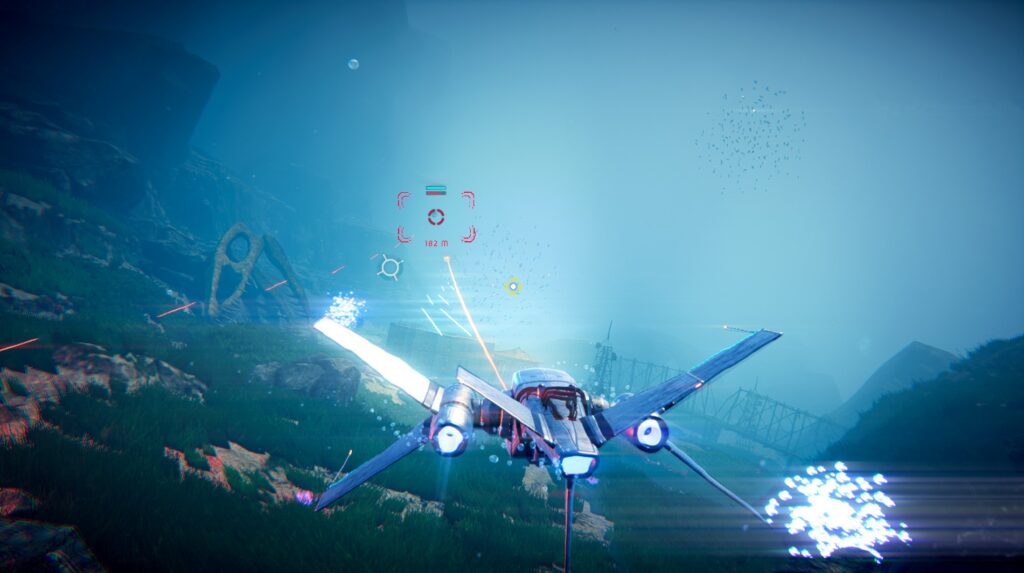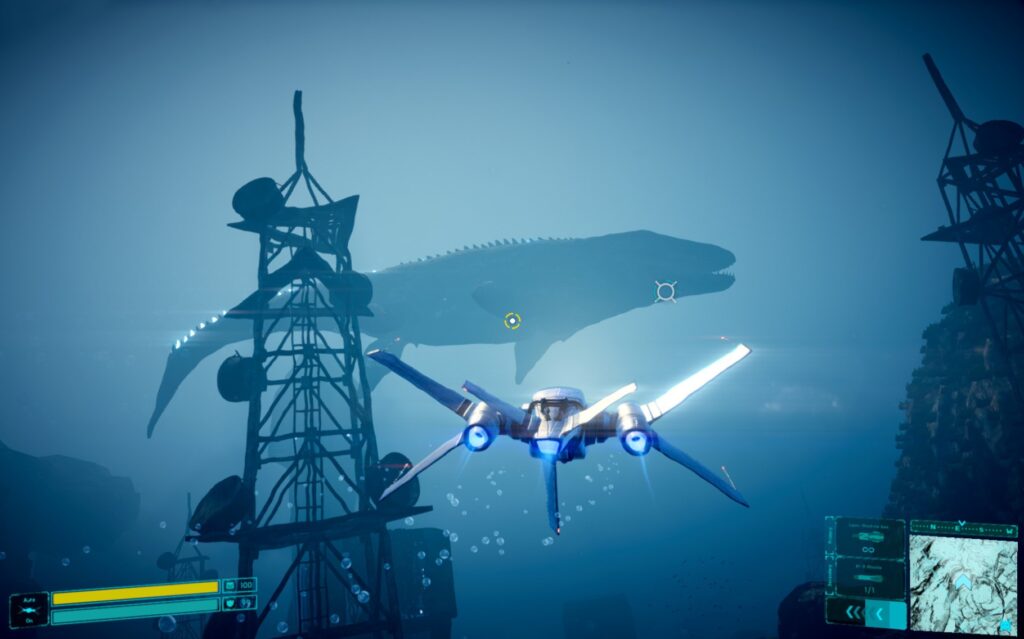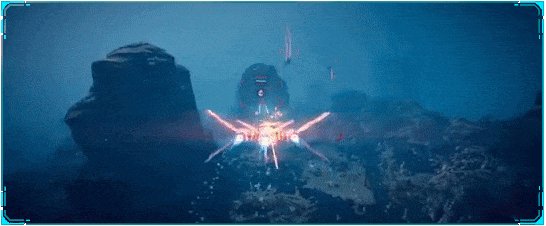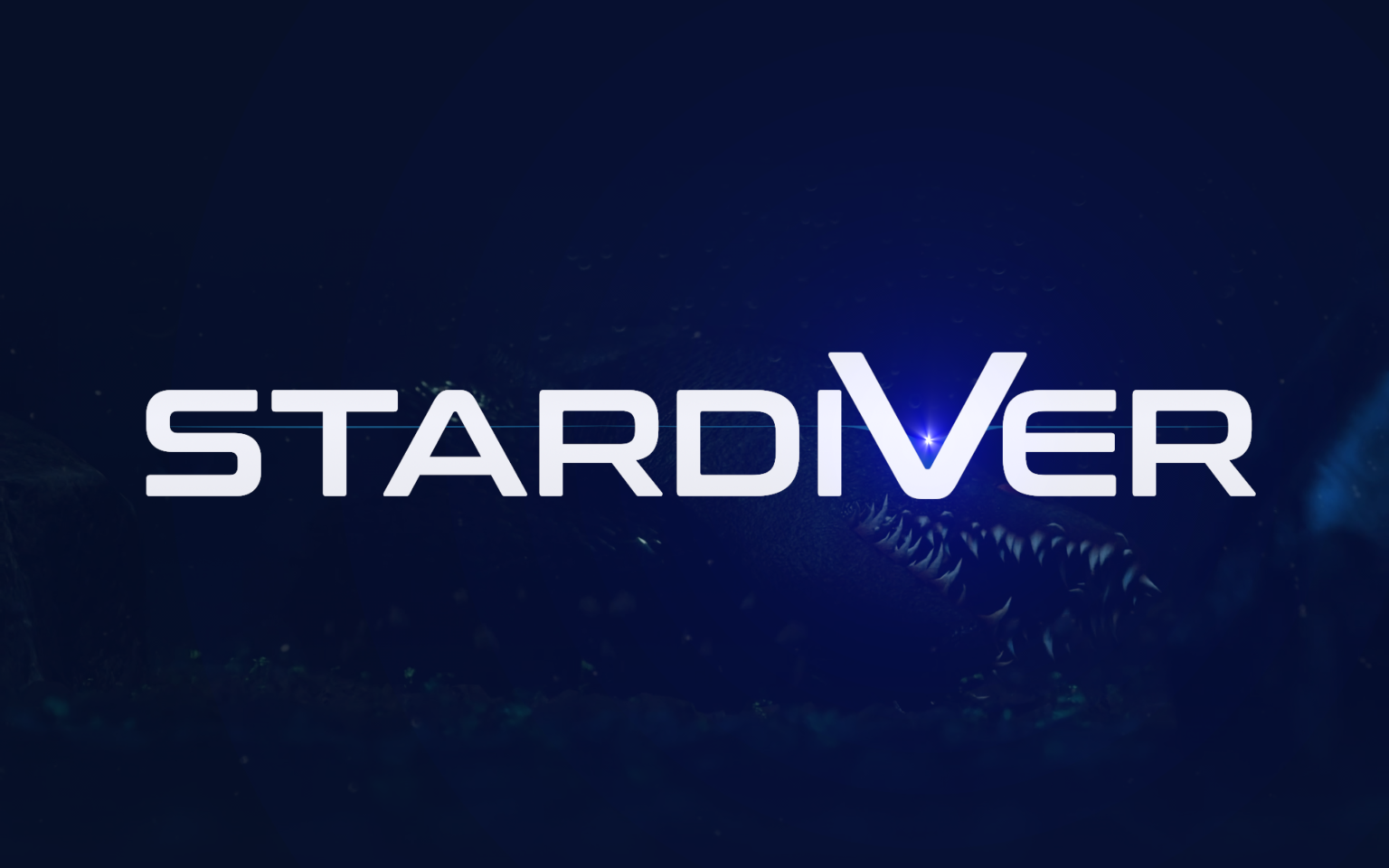Stardiver, a new sci-fi underwater action-adventure game, invites players to dive into a mysterious ocean world, exploring its submerged landscapes, battling dangerous creatures, and unraveling the secrets of a long-lost civilization. As a player, you navigate your own ship, gathering resources, crafting items, and surviving perilous encounters with creatures and enemy vessels lurking in the depths. Developed for single players, the game offers a balance between adventure, exploration, and tactical combat, all set in an eerie, expansive underwater setting.
This review dives into the mechanics, strengths, and drawbacks of Stardiver, bringing you a comprehensive look at what this game has to offer.
A Deep Dive into the World of Stardiver
Set on an alien planet submerged in water, Stardiver creates a uniquely immersive experience as players explore an underwater world teeming with both beauty and danger. With the ocean as its canvas, the game’s visuals excel, offering breathtaking underwater vistas, detailed flora and fauna, and a variety of landscapes. This focus on underwater graphics and sound design gives Stardiver a calm, almost meditative vibe as players explore, occasionally broken by thrilling battles and the tension of survival.
From ancient ruins to mesmerizing species, Stardiver’s underwater environment is as mysterious as it is beautiful, encouraging exploration at every turn. Each section of the game’s vast ocean world reveals clues to a forgotten civilization, which adds layers of intrigue to the experience. While the narrative is minimal, the game’s atmosphere tells a story of its own, supported by environmental storytelling and hints at the abandoned base’s past.

Gameplay Mechanics: Exploration, Resource Management, and Combat
Piloting Your Ship
In Stardiver, you play as a lone pilot exploring the depths. The game introduces you to your initial ship, which, while sturdy, moves at a slow pace. This can feel limiting at first, especially in the vast, open water with no quick means of transport. However, players can eventually upgrade the ship, enhancing its speed, maneuverability, and combat capabilities. Until those upgrades come, however, navigating can feel a bit sluggish.
Controls can take a bit of adjustment. Moving through a 3D underwater world is inherently different from land-based exploration, and Stardiver’s control scheme reflects this complexity. Some players may initially find the controls slightly clunky, but the learning curve is manageable, and once mastered, the controls become second nature, allowing for fluid movement through underwater battles and resource-gathering missions.
Combat and Encounters
Stardiver isn’t just about exploration—there’s an emphasis on combat as well. Players encounter a variety of hostile creatures and enemy ships that require strategic thinking and quick reactions to defeat. Combat is straightforward but challenging, especially when larger, more dangerous foes appear. Spontaneous skirmishes occur while searching for resources, keeping players on their toes, while more formidable enemies demand careful preparation. Players must weigh the benefits of combat versus conservation of resources, adding depth to the overall strategy.
While the battles are exhilarating, the pacing can sometimes feel slow, as players may find themselves swimming between lengthy gaps without much action or direction. Some players may enjoy the relaxed pace, while others might prefer a faster tempo or more frequent encounters.

Exploration and Resource Gathering
The thrill of exploration lies at the heart of Stardiver. The game rewards curiosity, encouraging players to survey ancient ruins, study exotic species, and map out unknown territories. However, with such a sprawling world, it’s easy to feel a bit lost at times. The absence of a waypoint system or map manipulation can lead to moments of disorientation, especially when players are unsure of their next objective. A waypoint system could make it easier for players to navigate and plan their journeys through the depths.
Resource management plays a significant role in Stardiver, as players gather materials to craft essential upgrades and weapons for their ship. Stardiver offers options to place auto-mining equipment, which passively gathers resources when players are busy exploring or fighting. The balance between exploration and resource gathering adds an engaging layer to gameplay, and building up a powerful ship becomes essential for survival.
Crafting and Ship Upgrades
Crafting is another key element in Stardiver, with a range of customization options available for your ship. Players can use resources to upgrade weapons, armor, and movement capabilities, gradually transforming their starting vessel into a formidable underwater machine. Crafting adds a satisfying sense of progression, as players witness their ship evolve into something more powerful and resilient, better suited for taking on tougher opponents and navigating harsh environments.
That said, crafting materials aren’t always easy to come by, and the time investment needed to gather resources may feel a bit tedious, especially in the early stages of the game. However, for those who enjoy resource management and a steady progression, the crafting system offers a rewarding aspect of the game.
Visuals and Sound: Immersion in the Deep
Stardiver’s visuals are a standout feature, with beautifully rendered underwater environments that draw players into an alien, aquatic world. The ocean landscape shifts from serene to ominous as players descend deeper, with lighting effects and detailed textures contributing to the ambiance. The music and sound effects add a hauntingly atmospheric touch, blending soothing melodies with subtle, immersive sounds of the deep. The soundtrack complements the visuals, creating a cohesive aesthetic that’s ideal for long hours of exploration.
While some players have critiqued the narrator’s voice as monotonous, others may appreciate its subdued, almost meditative tone, which aligns well with the game’s overall vibe. Though a native VR option is not available, players who use third-party software like VorpX can experience a decent level of 3D immersion, which enhances the game’s atmospheric quality even further.

Reflections from the Depths: What Stardiver Does Well and Where It Could Improve
Strengths of the Oceanic Journey
- Beautiful Visuals and Sound Design: Stardiver excels in creating a stunning underwater world with atmospheric soundscapes that enhance the experience.
- Rewarding Exploration: The game encourages players to explore and rewards curiosity with hidden details, crafting resources, and lore.
- Engaging Combat Mechanics: The variety of enemies and strategic approach to combat keep encounters exciting.
- Customizable Crafting System: A wide range of upgrades and options for the ship allow players to personalize their gameplay experience.
Drifting in the Deep: Areas for Improvement
- Slow-Paced Gameplay: While the exploration-focused gameplay may appeal to some, others may find it too slow or lacking in direction.
- Lack of Waypoint and Map Controls: Navigation can be challenging, especially without the option to move the map or set waypoints.
- Clunky Initial Controls: The ship controls may feel awkward initially, though they become more intuitive with time.
- Limited Initial Ship Speed: The starter ship’s slow movement can make early exploration feel tedious until upgrades are obtained.
Stardiver: Stardiver offers an immersive underwater adventure with stunning visuals, atmospheric soundscapes, and a unique blend of exploration and combat. While the slow pacing and initial clunky controls may deter some players, those who invest the time to adapt will find an engaging experience rich with discovery and customization. Ideal for players who enjoy methodical exploration, Stardiver is a satisfying dive into the unknown depths, even if it occasionally leaves players adrift. – Obsidian


